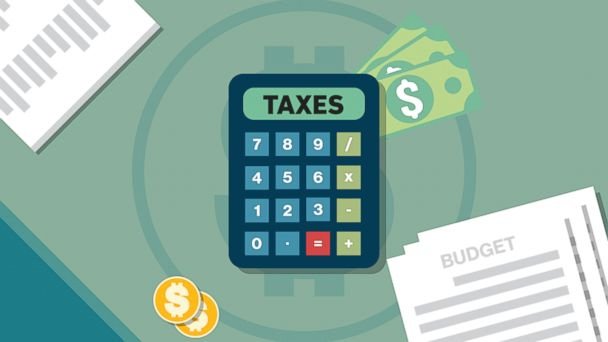Tax Proration Calculator
Property Tax Proration Calculator: A Guide to Using a Tax Proration Calculator
Introduction
When buying or selling a home, property taxes are a crucial factor in closing costs. Since property taxes are typically paid in arrears, sellers and buyers must account for the portion of taxes owed during the ownership period. A Tax Proration Calculator simplifies this process by ensuring fair distribution of tax liabilities between parties.
In this guide, we’ll explore:
- What property tax proration is
- How a Property Tax Proration Calculator works
- Why real estate professionals rely on a Real Estate Tax Proration Calculator
- Step-by-step instructions for using a Prorated Tax Calculator
- Common proration methods
- Legal considerations in tax proration
By the end, you’ll understand how a Proration of Taxes Calculator helps in real estate transactions and ensures accurate financial settlements.
What Is Property Tax Proration?
Property taxes are usually paid annually or semi-annually, but when a property is sold mid-year, the tax burden must be divided fairly between the buyer and seller. Tax proration ensures that each party pays only for the time they owned the property.
Why Proration Matters in Real Estate
- Ensures fairness in splitting tax obligations
- Prevents disputes between buyers and sellers
- Helps in accurate closing cost estimations
- Required by lenders and title companies
A Tax Proration Calculator automates this calculation, reducing errors and saving time.
How Does a Property Tax Proration Calculator Work?
A Property Tax Proration Calculator determines the exact amount of taxes owed by each party based on:
- Closing Date – The day ownership transfers
- Annual Tax Amount – Total property taxes for the year
- Payment Status – Whether taxes have been prepaid
Key Inputs in a Real Estate Tax Proration Calculator
- Closing Date – The date when the property changes hands
- Annual Tax Amount – The total tax due for the year
- Tax Payment Status – Checks if the seller has already paid taxes for the period
Common Proration Methods
- 365-Day Method – Divides taxes evenly across all days of the year.
- Actual Days Method – Uses the exact number of days each party owns the property.
- Statutory Method – Follows state-specific real estate laws.
Most Prorated Tax Calculators use the 365-Day Method for simplicity.
Step-by-Step Guide to Using a Proration of Taxes Calculator
Step 1: Enter the Closing Date
The calculator uses this date to split tax responsibility.
Step 2: Input the Annual Tax Amount
The total tax due for the fiscal year.
Step 3: Check Prepaid Taxes (If Applicable)
- If the seller paid taxes in advance, the buyer reimburses them for the unused period.
- If unpaid, the seller credits the buyer for their share.
Step 4: Calculate Prorated Taxes
The Tax Proration Calculator automatically computes:
- Seller’s Share – Taxes owed up to the closing date
- Buyer’s Share – Taxes due from closing onward
Example Calculation
- Annual Tax: $3,600
- Closing Date: June 30 (Mid-Year)
- Seller’s Share (Jan 1 – June 30): $1,800
- Buyer’s Share (July 1 – Dec 31): $1,800
Why Real Estate Professionals Use a Tax Proration Calculator
1. Accuracy in Closing Statements
Manual calculations can lead to errors, but a Real Estate Tax Proration Calculator ensures precision.
2. Faster Transactions
Automated tools speed up closing processes by instantly generating prorated amounts.
3. Compliance with State Laws
Different states have varying proration rules. A Proration of Taxes Calculator can be customized to comply with local regulations.
4. Transparency Between Parties
Buyers and sellers can verify calculations, reducing disputes.
Legal Considerations in Tax Proration
1. State-Specific Rules
- Some states mandate a specific proration method.
- Escrow agents often handle proration in regulated markets.
2. Prepaid vs. Arrears Taxes
- Prepaid Taxes: Seller pays taxes in advance (common in Texas).
- Arrears Taxes: Paid after the billing period (common in California).
3. Adjustments at Closing
- If taxes increase after closing, buyers may owe supplemental bills.
- Reassessment laws can affect future tax liabilities.
Common Mistakes to Avoid in Tax Proration
1. Incorrect Closing Date Entry
Even a one-day error can skew calculations.
2. Ignoring Tax Rate Changes
If taxes are reassessed mid-year, proration must account for new rates.
3. Overlooking Special Assessments
Some municipalities charge additional fees (e.g., school district taxes) that must be prorated.
4. Miscalculating Leap Years
A Tax Proration Calculator automatically adjusts for February 29.
Conclusion: Why a Prorated Tax Calculator Is Essential
A Tax Proration Calculator is an indispensable tool for:
- Homebuyers & Sellers – Ensures fair tax division
- Real Estate Agents – Simplifies transaction paperwork
- Title Companies – Reduces closing errors
- Lenders – Provides accurate escrow estimates
By using a Property Tax Proration Calculator, all parties can confidently navigate tax allocations, ensuring smooth and dispute-free real estate transactions.
Final Thoughts
Whether you’re a first-time homebuyer or a seasoned investor, understanding tax proration is crucial. A Real Estate Tax Proration Calculator eliminates guesswork, providing clarity and fairness in every deal.
For quick and accurate tax proration, try our free Proration of Taxes Calculator today!

Check home Reversion Calculator (click here)
Check house Repiping Cost Calculator (click here)